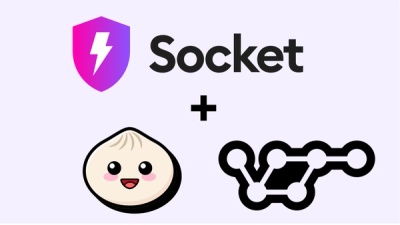
Product
Introducing Webhook Events for Alert Changes
Add real-time Socket webhook events to your workflows to automatically receive software supply chain alert changes in real time.
fabric8-planner
Advanced tools
= Fabric8 Planner
image:https://jenkins.cd.test.fabric8.io/job/fabric8-ui/job/fabric8-planner/job/master/badge/icon[Jenkins, link="https://jenkins.cd.test.fabric8.io/job/fabric8-ui/job/fabric8-planner/job/master/"] image:https://img.shields.io/npm/v/fabric8-planner.svg[npm, link="https://npmjs.com/package/fabric8-planner"] image:https://codecov.io/gh/fabric8-ui/fabric8-planner/branch/master/graph/badge.svg[Codecov.io, link="https://codecov.io/gh/fabric8-ui/fabric8-planner"] image:https://img.shields.io/badge/%20%20%F0%9F%93%A6%F0%9F%9A%80-semantic%20release-b4d455.svg[Semantic Release, link="https://github.com/semantic-release/semantic-release"]
:icons: :toc: macro :toc-title: :toclevels: 2
toc::[]
== Overview Fabric8 Planner is a task planner and the issue tracker front-end for link:https://openshift.io/[openshift.io]. It uses the link:https://github.com/fabric8-services/fabric8-wit[Fabric8 Work Item Tracker] as the back-end.
The Planner project provides a component library which is used by other applications to provide a task planning front-end.
The Planner is available as an npm package. It can not be run by itself as it is an Angular component library. However, for development and testing purpose, a minimal runtime environment is available in the link:runtime[runtime] directory.
You can run Planner either as a minimal Standalone component or as an Integrated component using an external webapp like the fabric8-ui. It is recommended to use the Integrated component to build and run Planner.
== Quickstart
The Planner can be quickly built using the link:scripts/run-planner.sh[launcher script].
You can use the launcher script to build the Planner either as an Integrated component using an external webapp like the fabric8-ui or as a Standalone component.
=== Integrated mode
NOTE: The Integrated mode is the default mode for building Planner using this script.
.Prerequisite
This script supports the following flags:
For example:
scripts/run-planner.sh -r -s to re-install planner and run it in standalone mode.scripts/run-planner.sh -r -f /home/User/fabric8-ui if you wish to set the platform path. By default, the Fabric8 UI path is assumed to be Planner_Path/... Access the service on: http://localhost:3000
=== Standalone mode The Standalone Mode uses prod-preview backend by default.
. Access the service on http://localhost:8080
. Get an auth token:
.. Navigate to http://api.prod-preview.openshift.io/api/login/authorize?redirect=https://api.openshift.io/api/status
.. Log in with your OSIO user name (for example, +preview@redhat.com). The part after "?token_json" in the resulting url is the token. Copy this token.
. Use the token to log in as: localhost:8080/?<the token>
. Navigate to prod-preview and get a space ID you want to use from the url. . Use that spaceId to get to a space on your local instance: http://localhost:8080/plan/list?q=(space:%20$AND%20typegroup.name:Scenarios)&showTree=true
Optionally, you can change the default prod-preview backend and use external web apps by setting the environment variables for the services, for example:
== Documentation The following documentation is available in the docs directory:
gulp tasks.== Contributing
All contributions are welcome, if you want to contribute to this project, ensure you follow the link:CONTRIBUTING.adoc[Contribution Guidelines].
FAQs
A planner front-end for Fabric8.
The npm package fabric8-planner receives a total of 77 weekly downloads. As such, fabric8-planner popularity was classified as not popular.
We found that fabric8-planner demonstrated a not healthy version release cadence and project activity because the last version was released a year ago. It has 4 open source maintainers collaborating on the project.
Did you know?

Socket for GitHub automatically highlights issues in each pull request and monitors the health of all your open source dependencies. Discover the contents of your packages and block harmful activity before you install or update your dependencies.

Product
Add real-time Socket webhook events to your workflows to automatically receive software supply chain alert changes in real time.

Product
Socket now scans OpenVSX extensions, giving teams early detection of risky behaviors, hidden capabilities, and supply chain threats in developer tools.

Product
Bringing supply chain security to the next generation of JavaScript package managers